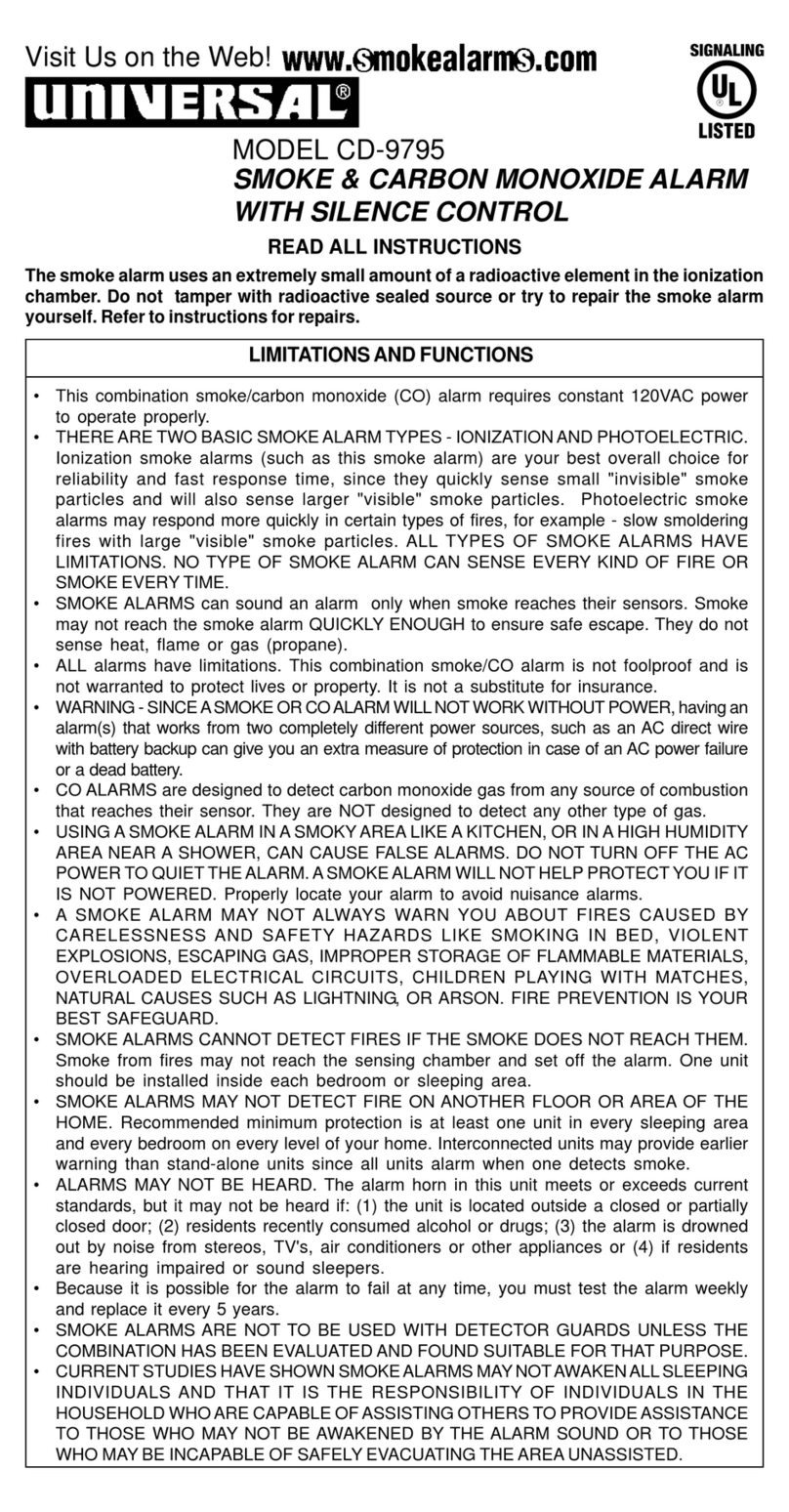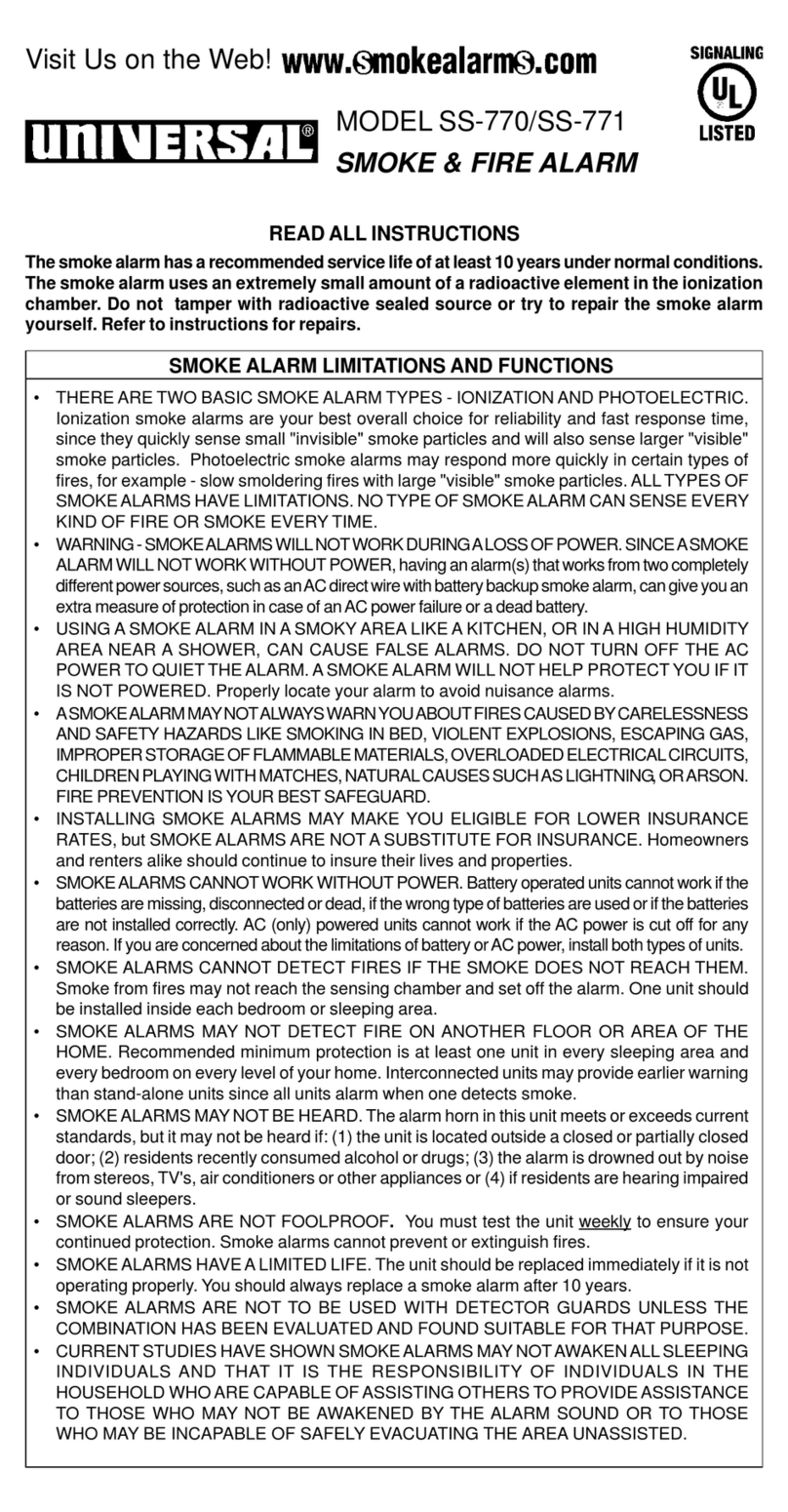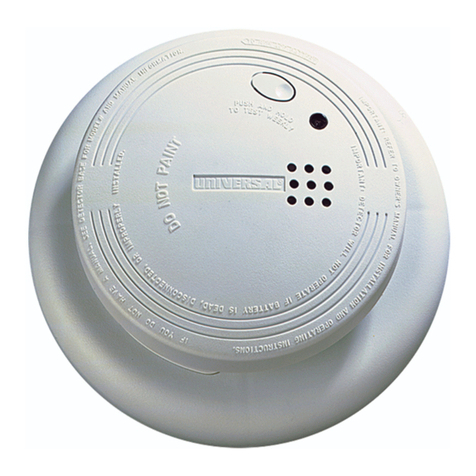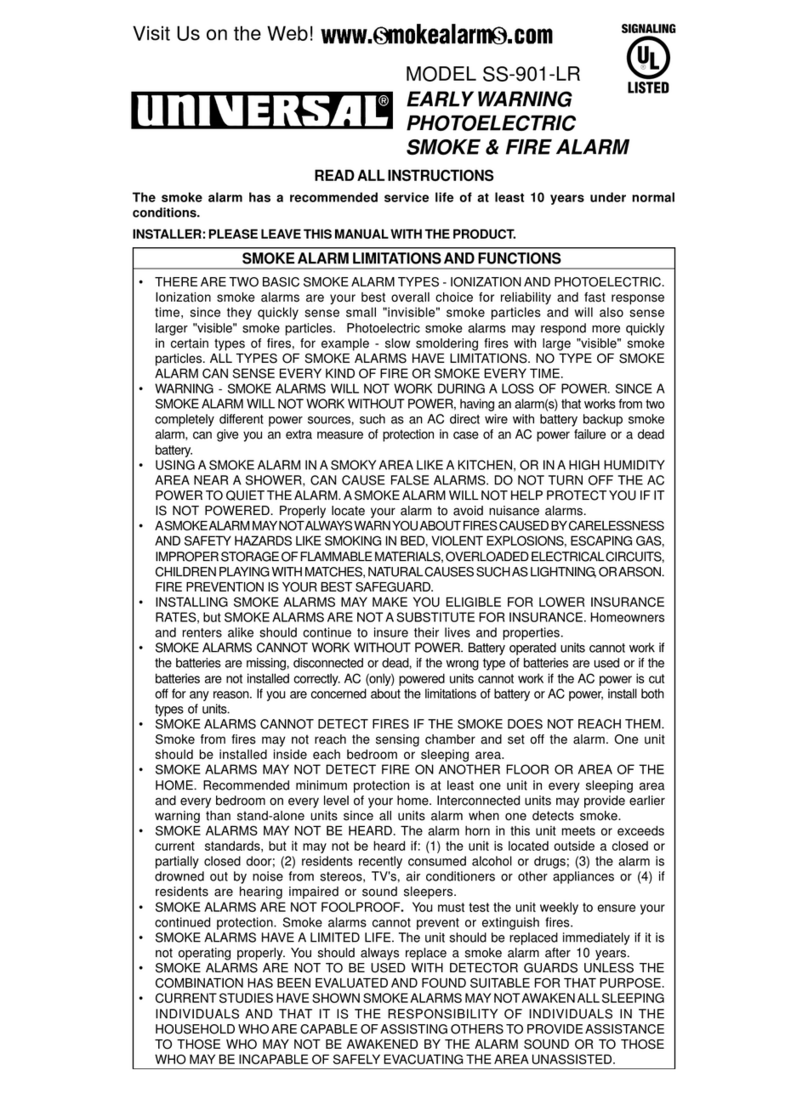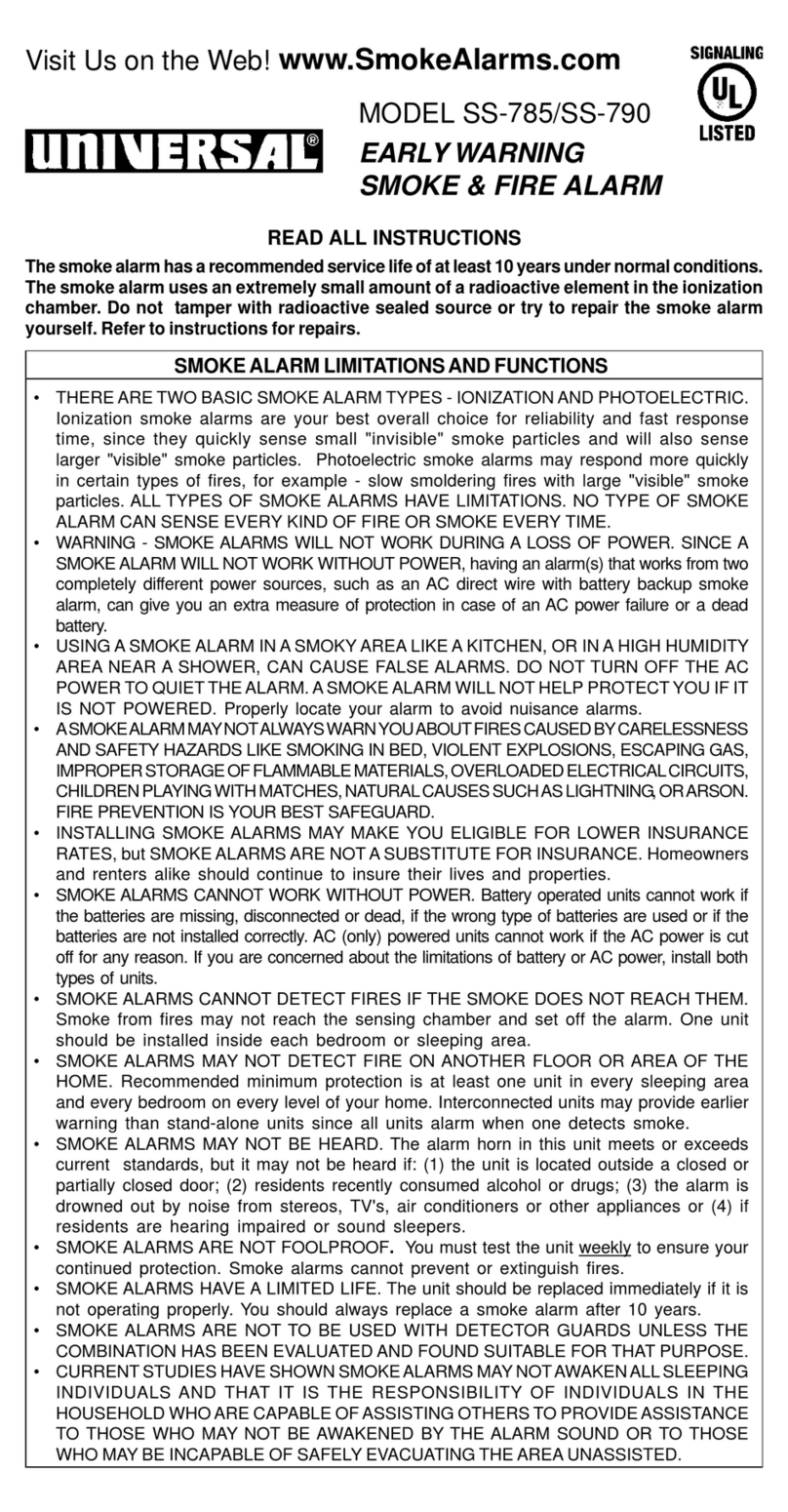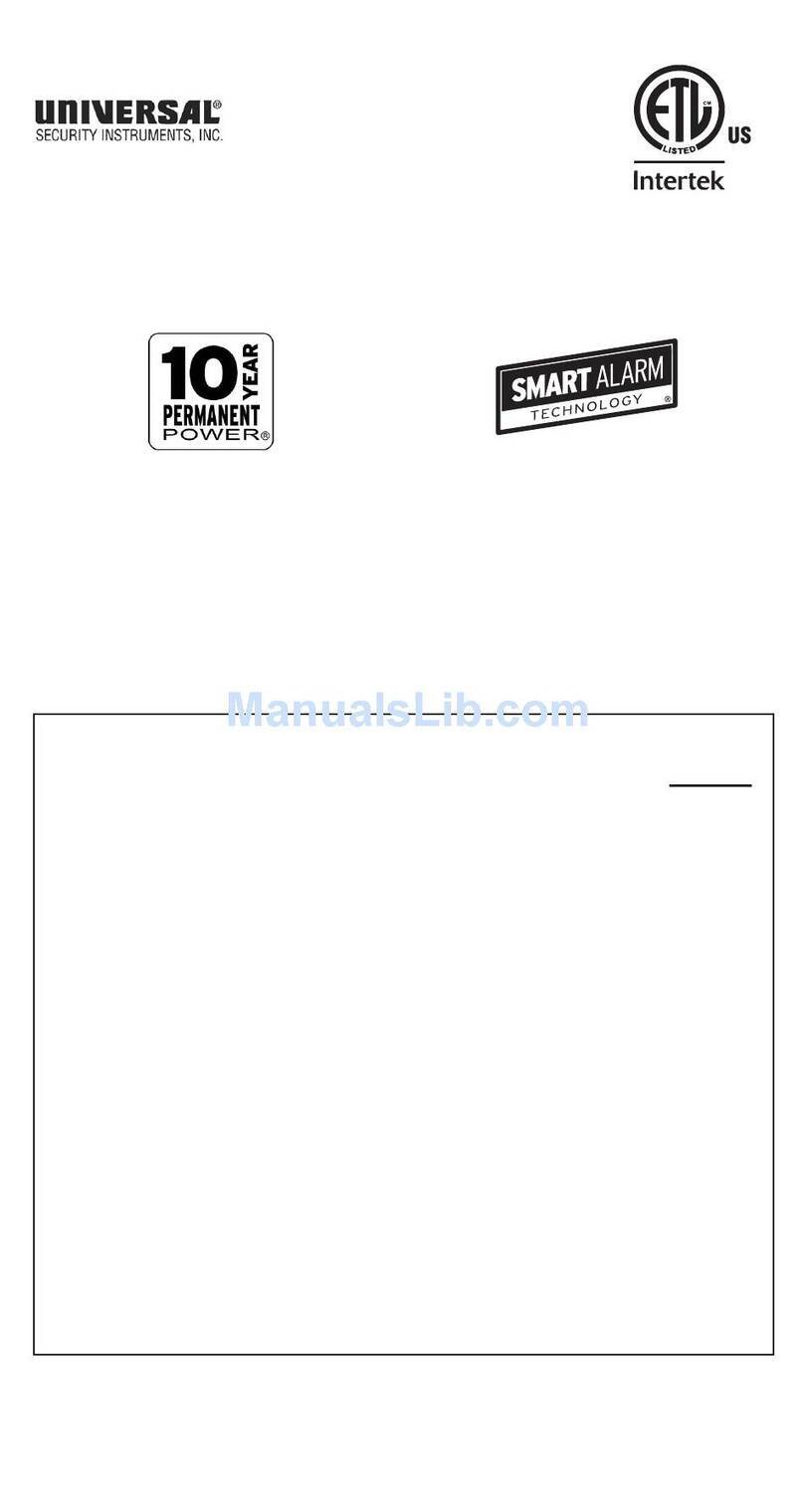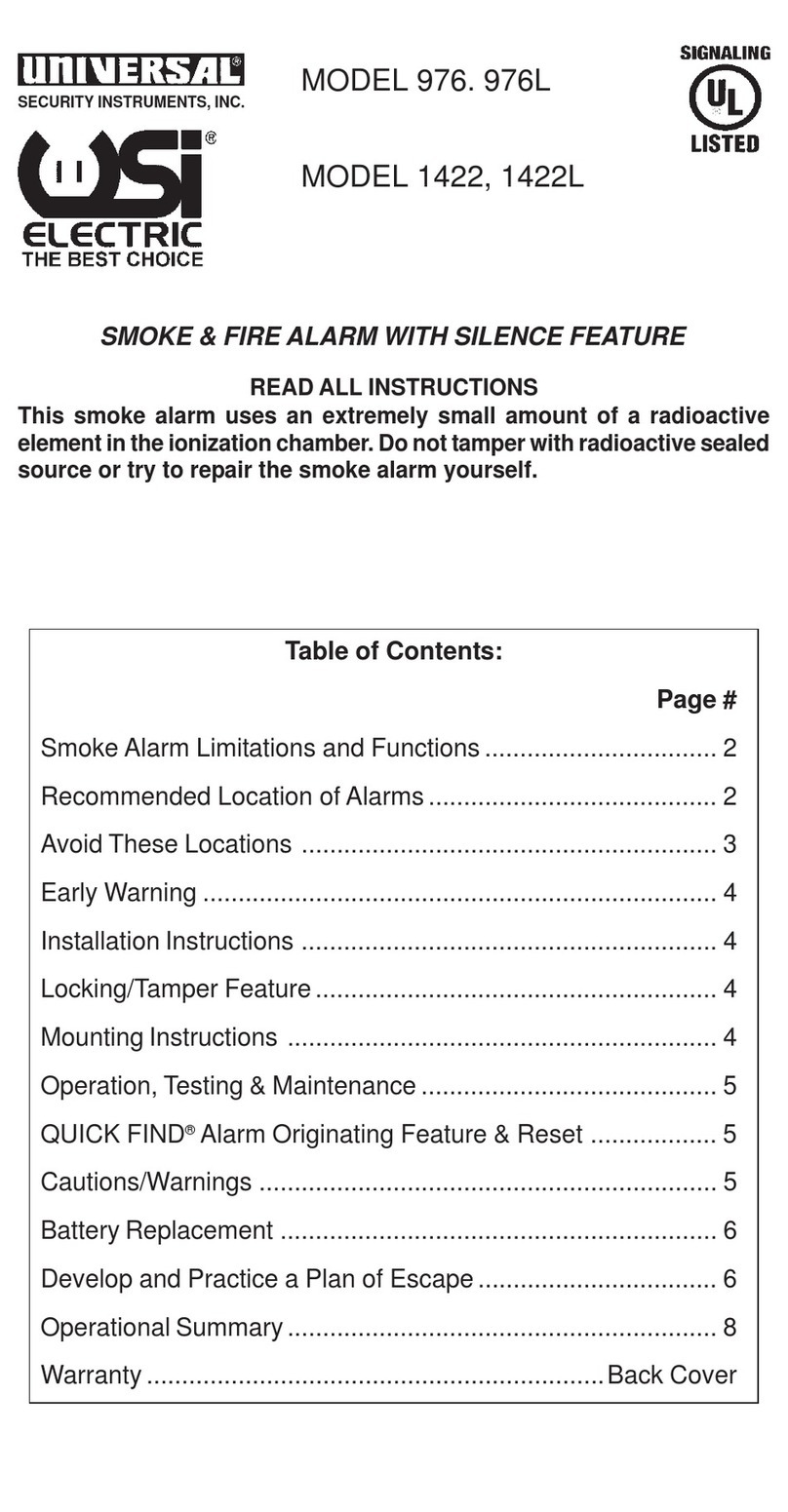SMOKE & FIRE ALARM
with Silence Control
MODELSS-775/SS-776
READALL INSTRUCTIONS
Thesmokealarmhas arecommended servicelife ofat least10 yearsunder normalconditions.
The smoke alarm uses an extremely small amount of a radioactive element in the ionization
chamber. Do not tamper with radioactive sealed source or try to repair the smoke alarm
yourself. Refer to instructions for repairs.
SMOKE ALARM LIMITATIONS AND FUNCTIONS
• THEREARE TWO BASIC SMOKEALARM TYPES - IONIZATIONAND PHOTOELECTRIC.
Ionization smoke alarms are your best overall choice for reliability and fast response time,
since they quickly sense small "invisible" smoke particles and will also sense larger "visible"
smoke particles. Photoelectric smoke alarms may respond more quickly in certain types of
fires, for example - slow smoldering fires with large "visible" smoke particles.ALLTYPES OF
SMOKEALARMSHAVELIMITATIONS.NO TYPEOFSMOKEALARMCAN SENSEEVERY
KIND OF FIRE OR SMOKE EVERYTIME.
• WARNING-SMOKEALARMSWILLNOTWORKDURINGALOSSOFPOWER.SINCEASMOKE
ALARMWILLNOTWORKWITHOUTPOWER,havinganalarm(s)thatworksfromtwocompletely
differentpowersources,suchasanACdirectwirewithbatterybackupsmokealarm,cangiveyouan
extrameasureofprotectionincaseofanAC power failure or a dead battery.
• USINGASMOKE ALARM INASMOKYAREALIKE A KITCHEN, OR INA HIGH HUMIDITY
AREA NEAR A SHOWER, CAN CAUSE FALSE ALARMS. DO NOT TURN OFF THE AC
POWER TO QUIETTHEALARM.ASMOKEALARM WILL NOTHELP PROTECTYOU IF IT
IS NOT POWERED. Properly locate your alarm to avoid nuisance alarms.
• ASMOKEALARMMAYNOTALWAYSWARNYOUABOUTFIRESCAUSEDBYCARELESSNESS
AND SAFETY HAZARDS LIKE SMOKING IN BED, VIOLENT EXPLOSIONS, ESCAPING GAS,
IMPROPERSTORAGEOFFLAMMABLEMATERIALS,OVERLOADEDELECTRICALCIRCUITS,
CHILDRENPLAYINGWITHMATCHES,NATURALCAUSESSUCHASLIGHTNING,ORARSON.
FIRE PREVENTION IS YOUR BESTSAFEGUARD.
• INSTALLING SMOKE ALARMS MAY MAKE YOU ELIGIBLE FOR LOWER INSURANCE
RATES, but SMOKEALARMSARE NOTASUBSTITUTE FOR INSURANCE. Homeowners
and renters alike should continue to insure their lives and properties.
• SMOKEALARMS CANNOTWORK WITHOUTPOWER. Battery operated unitscannotwork if the
batteriesaremissing,disconnectedordead,if thewrong typeofbatteriesareusedorif thebatteries
are not installed correctly. AC (only) powered units cannot work if the AC power is cut off for any
reason.Ifyouare concerned about the limitationsof battery orACpower,install both types of units.
• SMOKE ALARMS CANNOT DETECT FIRES IF THE SMOKE DOES NOT REACH THEM.
Smoke from fires may not reach the sensing chamber and set off the alarm. One unit should
be installed inside each bedroom or sleeping area.
• SMOKE ALARMS MAY NOT DETECT FIRE ON ANOTHER FLOOR OR AREA OF THE
HOME. Recommended minimum protection is at least one unit in every sleeping area and
everybedroomon every levelofyour home. Interconnected units may provide earlierwarning
than stand-alone units since all units alarm when one detects smoke.
• SMOKEALARMS MAYNOTBE HEARD.Thealarmhorn inthisunit meetsorexceeds current
standards,but it may not be heard if: (1) theunitislocated outsidea closed or partiallyclosed
door;(2)residentsrecently consumedalcoholordrugs; (3) the alarm is drowned outbynoise
fromstereos,TV's,air conditioners or otherappliancesor (4) if residentsare hearing impaired
or sound sleepers.
• SMOKE ALARMS ARE NOT FOOLPROOF. You must test the unit weekly to ensure your
continued protection. Smoke alarms cannot prevent or extinguish fires.
• SMOKEALARMS HAVEALIMITED LIFE. The unit should be replaced immediately if it is not
operating properly.You should always replace a smoke alarm after 10 years.
• SMOKE ALARMS ARE NOT TO BE USED WITH DETECTOR GUARDS UNLESS THE
COMBINATION HAS BEEN EVALUATEDAND FOUND SUITABLE FOR THAT PURPOSE.
• CURRENTSTUDIESHAVE SHOWNSMOKEALARMSMAYNOTAWAKENALLSLEEPING
INDIVIDUALS AND THAT IT IS THE RESPONSIBILITY OF INDIVIDUALS IN THE
HOUSEHOLD WHOARE CAPABLE OFASSISTING OTHERS TO PROVIDEASSISTANCE
TO THOSE WHO MAY NOT BE AWAKENED BY THE ALARM SOUND OR TO THOSE
WHO MAY BE INCAPABLE OF SAFELY EVACUATING THE AREA UNASSISTED.
Visit Us on the Web! www.SmokeAlarms.com
